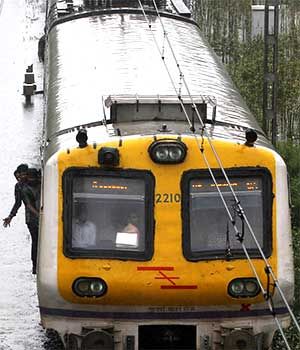 It is willing to let go of its budgetary independence and restructure its companies in order to make itself more viable commercially and less important politically, says Jyoti Mukul.
It is willing to let go of its budgetary independence and restructure its companies in order to make itself more viable commercially and less important politically, says Jyoti Mukul.
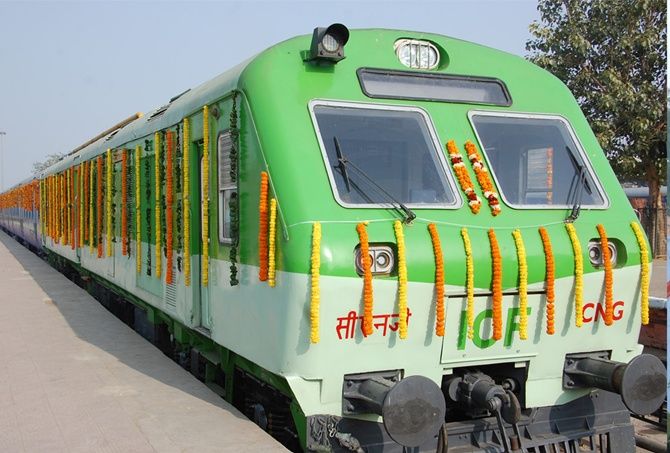
If the government decides to merge the Railway Budget with the General Budget, create a holding company for Railway’s public sector units and carry on with off-budget revisions in freight and passenger fares, the policy paradigm within which the Indian Railways functions will completely change in less than six months.
Since the British days, the Railways has been treated as an autonomous entity within the government. After these changes, a good measure of the decision-making will move to the ministry of finance.
It will be a merger of convenience for the government if it continues to seek dividend from the Railways and keeps the borrowings off its books since they are technically raised by Indian Railway Finance Corporation, or IRFC, and not by the government directly.
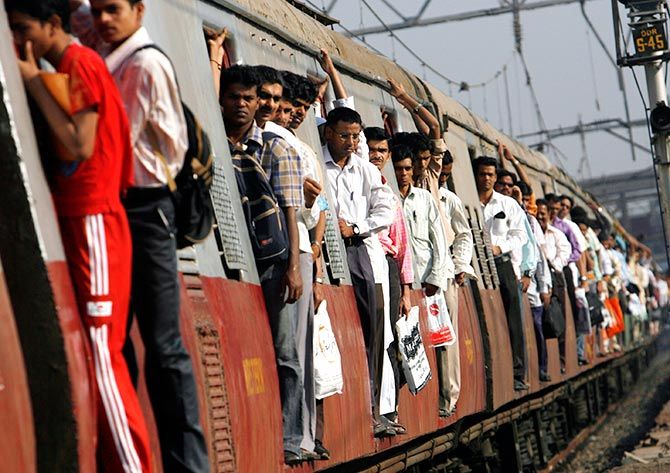
Railway PSUs under a holding company
There is a view that the Railways should not be asked to pay over Rs 10,000 crore (Rs 100 billion) in annual dividend to the government after the merger of the two budgets. No other government department pays interest in the form of dividend on the gross budgetary support. The government earns dividend only on PSU equity.
“There was no level playing field for the railways, since the government invested in other transport infrastructure without expecting any returns on the grounds that they do not make money,” says Shanti Narain, former member traffic, Railway Board.
The logic behind separate budgets, says Narain, was to allow the Railways to fund its own expansion, but the exercise got mired in politics. The entire process became “something artificial” and “the flexibility was circumcised” because it needed to be approved by Parliament.
Why merge
The proposal for merger of budgets came out of the NITI Aayog, but faced protest from the railway bureaucracy. Later, however, the railways itself forwarded it to the Prime Minister’s Office.
R Sivadasan, former financial commissioner, Railway Board, says the reason the British separated Railway finances from the government’s budget is because investors in the Railways had to be given interest on their investment.
This system continued even after Independence. The government never put a single paisa in the form of gross budgetary support or subsidy without earning dividend on it for perpetuity.
Exceptions were made only for strategically important railway lines for which the government did not charge interest on its grants.
A relief from dividend payment could mean savings equivalent to 35 per cent of the Rs 28,450 crore additional burden that the Railways will have to bear because of the Seventh Pay Commission recommendations.
The merger may, however, not mean that the Railways no longer has to meet its expenses out of its own earnings.
“The ways and means of railway business will not change. The only difference will be that everything related to the railways was earlier being read in Parliament by the railway minister and now it will be read by the finance minister. All other things will not change,” says Sivadasan.
He, however, agrees the merger will bring an end to the autonomy that the railways has enjoyed so far.
A holding firm for PSUs
The railway’s autonomy also reflects in the fact that none of its PSUs, barring Container Corporation of India, has made it to the government’s disinvestment list.
Whether it was the first National Democratic Alliance government or the United Progressive Alliance government, each time the department of divestment in the ministry of finance tried to sell part of the government’s equity in these companies, successive railway ministers rejected the idea.
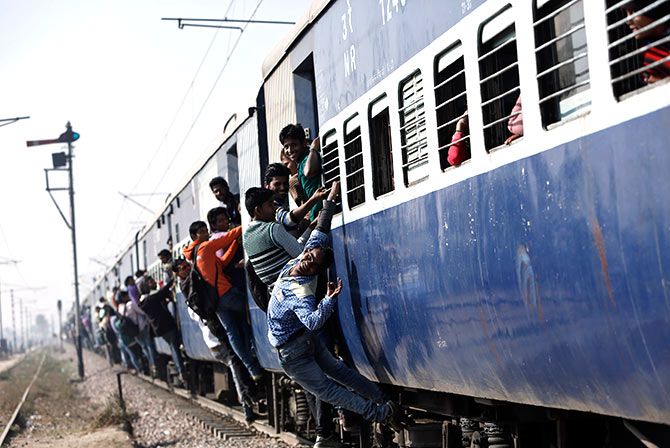
The railway ministry under Suresh Prabhu seems agreeable to disinvestment provided the funds are ploughed back into developing railway infrastructure. So a holding company is proposed to be created for 13 PSUs except IRFC.
The government equity in these companies will be held indirectly through the holding company. The holding company can earn out of selling equity in any of these companies and use the funds for further development of rail infrastructure.
For the government to earn revenue through divestment, it will have to divest equity in the holding company just as it currently does in Coal India.
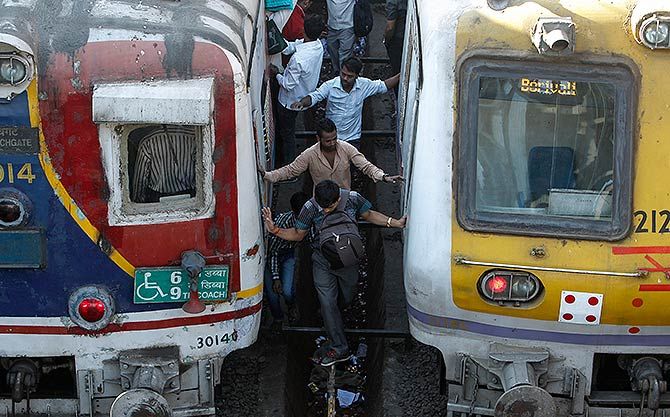
Besides directing disinvestment proceeds, such a structure will not be of much consequence. In fact, the government may end up creating an unwieldy structure for companies that are in unrelated businesses.
Railway PSUs range from consultancy, engineering and construction companies (RITES and Ircon) to catering and ticketing company (IRCTC) to optic fibre company (RailTel). All these companies are not in the core business of running trains but have been profitable in their own areas.
Freedom of fixing tariffs
In January 2013, barely a month-and-a-half before the Railway Budget was to be presented, then minister Pawan Kumar Bansal in the UPA government decided to go for an across the board increase in railway passenger fares after 10 years.
This was the first time freight rates were increased during the UPA rule, and it was made possible because Bansal was a Congress minister and not from an alliance partner of the government.
Earlier, Trinamool Congress’ Dinesh Trivedi had tried increasing the fares but ended up annoying his party boss, Mamata Banerjee. The decisions was not just rolled back but Trivedi also had to leave the ministry.

To Bansal’s credit, the Railway Budget 2013-14 also introduced the fuel adjustment component (FAC)-linked tariff revision, bi-annually in sync with movement in fuel costs in either direction. The concept in the case of freight tariffs was brought in the budget itself. Six months later in October 2016, FAC was introduced for passenger fares, too.
Later, it was during the tenure of Mallikarjun Kharge that dynamic pricing for some train services were introduced. Prabhu’s recent decisions to increase freight tariff and introduce demand-driven dynamic pricing in premium trains were steps in a direction thrown open by Bansal three years ago, when he took out fare revisions out of the budget announcements.
Though dynamic pricing in Duronto, Shatabdi and Rajdhani trains has been criticised(monopoly players are capitalising on demand shortage), it has primarily been done for meeting a revenue shortfall.
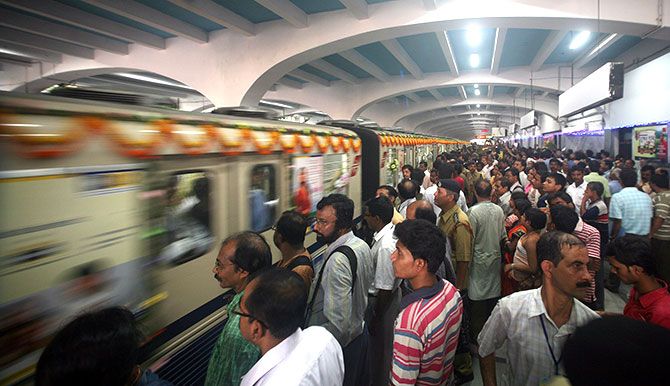
The Railways’ revenues were 12.65 per cent lower than its budgetary target of Rs 73,713 crore for April-August 2016. Its gross earnings declined 5 per cent to Rs 64,387 crore in the five-month period compared with the same period of the previous year.
The goal of all these moves is to create a more commercially-orientated transport behemoth. From being one of the most sort after portfolio, the Indian Railways could become politically less attractive if the government goes ahead with these changes. At the same time, altering the way the Railways functions could be a precursor for its corporatisation.
Photographs: Arko Datta/Reuters, Anindito Mukherjee/Reuters. Danish Siddiqui/Reuters, Navesh Chitrakar/Reuters and Jayanta Shaw/Reuters.






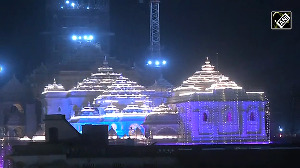
 © 2025
© 2025